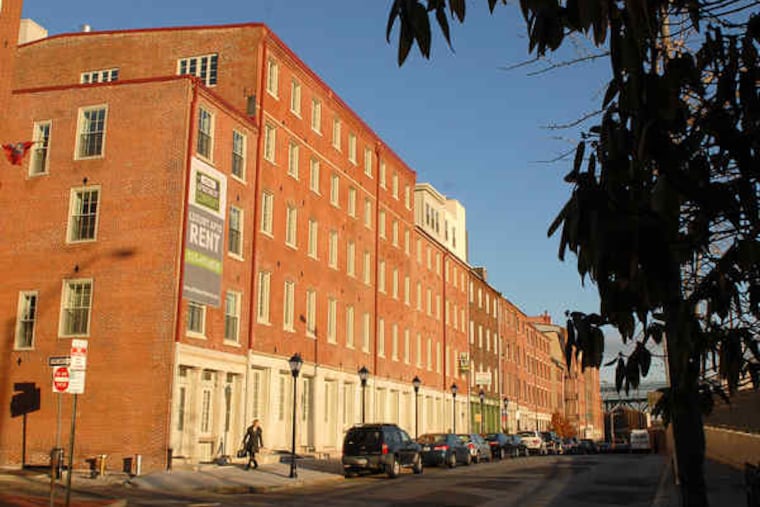Old City project finds success with renters
It's a minor miracle when a developer can bring a project to completion in these tough economic times. The newest example is the Old City Mercantile Building at 20-30 N. Front St.

It's a minor miracle when a developer can bring a project to completion in these tough economic times.
The newest example is the Old City Mercantile Building at 20-30 N. Front St.
Developer BRP Cos., of New York, has completed the renovation of the Old City landmark, a row of Greek Revival-style warehouses built between 1828 and 1834 by the Stephen Girard family.
Geoff Flournoy, BRP's principal, said four of the 35 rental apartments had been spoken for. The one-, two- and three-bedroom units range from 723 square feet to 2,413 square feet and rent for $1,300 to $3,900 a month.
Rentals are handled by the Philadelphia Apartment Co. (www.PhillyApartmentCo.com).
"There's a mix of apartment sizes and types," Flournoy said, designed to attract not only the traditional young and hip professional crowd, but families as well.
Old City Mercantile started life as condos, however.
"The building passed through various hands over the years, and we became involved in October 2005 in partnership with the then-owner, but bought him out and took over the project," Flournoy said.
The financing BRP had for the building was "predicated on doing condos," he said, but the condominium market began to soften.
That meant that any work on the structure had to be put on hold until BRP found alternative financing for rental apartments, and, as banks became less willing to lend, "things became very challenging," Flournoy said.
Even developers such as Carl Dranoff, with a 30-year-plus track record of success, acknowledges that "it was as tough for us to get loans as for homeowners and commercial projects" for his 146-unit, $70 million 777 S. Broad St.
Or, as developer Don Monti of Renaissance Downtowns in New York put it, banks today "want to see lots of skin in the game at your end."
Fortunately for BRP, Wachovia stepped up with a construction loan after the developer demonstrated the feasibility of building apartments in the market, Flournoy said.
Goldman Sachs Urban Investment Group provided the mezzanine financing for the project, for which Flournoy was unwilling to give a total cost estimate.
In addition, BRP was able to secure historic tax credits for the project because the building is on the National Register of Historic Places.
"It was fortunate that the building was so notable," he said, adding that the credits were available only for buildings that would remain rental for the long term.
The building had been allowed to deteriorate for more than 50 years. Neglect took its toll, and two back walls collapsed, for example.
Work resumed in September 2008, after financing had been obtained, and in concert with city authorities, the back walls were repaired and stabilized, Flournoy said.
The finished product has impressed those who had been worried about the building's future, especially the Preservation Alliance of Greater Philadelphia.
"We are delighted to see what has been done," the alliance's Patrick Hauck said.
Flournoy said what attracted BRP to Old City was its vibrancy. The neighborhood has held its own, although a few projects have been postponed or abandoned.
"During the last real estate downturn in Center City - the late 1980s, the first-time, younger buyer market wasn't nearly as affected as the move-up market," said Prudential Fox & Roach associate broker Mark Wade.
Because Old City tends to be a bit more affordable than, say, Rittenhouse Square, "the demand has remained a bit more stable in many respects," he said.
Old City's continued vitality bodes well for the future of what, 30 years ago, was a warehouse and manufacturing district in decline.
"While no major vacant sites remain [after three decades of development], there are still plenty of opportunities," Center City District president Paul Levy said.
"There are older warehouse and manufacturing buildings, surface lots, and interesting opportunities around Christ Church" at Second and Market Streets, Levy said.
"Old City is, by no means, complete," he said.